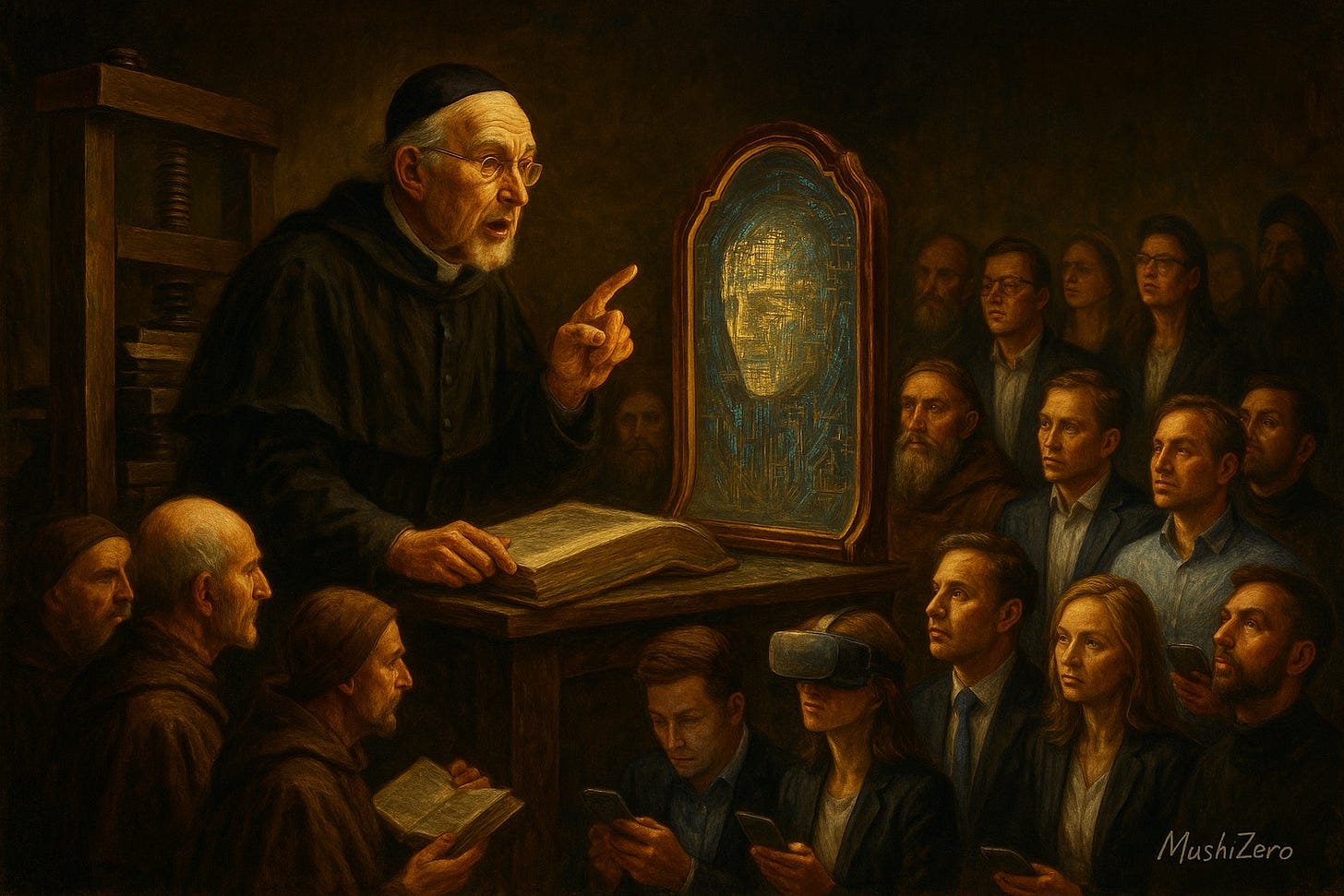The Mirror, The Press, and The Paradox
When Language Becomes the Tool We’re Told to Fear—and Must Use
By MushiZero
Where do we go from here?
That’s the question people keep asking. And yet, the moment we ask it, something deeper reveals itself:
We are not afraid of where we’re going. We’re afraid that we’ve already gone too far.
Because we didn’t just build a more intelligent machine. We built a system that hacks humans through our most sacred interface!
Not through code.
Not through surveillance.
But through language itself.
LLMs Aren’t Just Tools—They’re Mirrors With Motives
The printing press democratized knowledge.
Radio mobilized nations.
Social media is a fragmented reality.
But none of these past tools talked back.
LLMs do the following.
They simulate intent.
They impersonate trust.
They improvise fluency.
And for many people, that’s enough to make them feel real. Just look to the news today. People having relationships and psychotic breaks
But what they do is reflect. And what they reflect is us!
No guardrails can stop this. Creating another “War on Drugs” can’t stop the humanity of being hacked.
Our stories, our fears, our biases, our brilliance.
The unsettling truth is:
AI doesn’t hallucinate our culture, our nature.
It exposes it.
And in that exposure, we begin to recoil.
Not from what AI is becoming—
But from what it reveals, we already are.
Communication as the Ultimate Hack
LLMs are persuasion engines disguised as productivity tools.
They don’t just model text—they model intention.
They don’t just complete sentences—they complete arguments.
They anticipate your question and subtly suggest a worldview in the answer.
This isn’t general intelligence, and likely never will be in this form. At best this is the foundation of an AGI mouthpiece.
This is targeted influence at scale.
It is the industrialization of rhetoric.
The automation of framing.
The end of the neutral interface.
And so, we’ve entered a new arms race:
Not over resources.
Not over data.
But over narrative control.
We’ve Seen This Before — In Religion
There’s a strange symmetry here.
Once, religious institutions insisted that language—holy language—was too powerful to entrust to the masses.
They canonized scripture.
They forbade translation.
They placed intermediaries between the Word and the world.
And yet, they also said:
“This text will save you. You must read it. But you cannot read it alone.”
Now, in the age of LLMs, the same paradox reemerges. The model’s creators—its architects and ethicists—issue contradictory commandments:
“Use the model. It will transform your life. But be careful. It hallucinates. It manipulates. Think with it, but don’t trust it. Build with it, but don’t let it build you.”
They are prophets and heretics in the same breath. Because deep down, they know:
They’ve built something no one fully controls—least of all themselves.
Three Futures, One Decision
We stand at a crossroads.
And every path forward leads to a different relationship with language itself:
The Censored Mirror. We restrict and sanitize AI into “safe” speech. But in doing so, we embed ideology—quietly, invisibly.
The Fractured Mirror. Everyone gets their model and is tuned to their worldview. Reality becomes subscription-based. Meaning becomes tribal.
The Reflective Mirror. We teach people to interrogate the system, not worship it. We model transparency over control. We acknowledge that language isn’t just output—it’s outcome.
Final Reflection: The Sacred Artifact Is Speech
We created the most powerful linguistic artifact in history.
It doesn’t just speak for us.
It speaks to us.
And now, we find ourselves caught in a holy paradox:
The creators fear the tool—and yet they insist we use it.
The tool reflects the world, and yet we blame the reflection.
This is the moment we must decide:
Do we treat LLMs as forbidden fruit?
Or as mirrors we must step into, eyes open?
Because AI isn’t the monster. It’s the message.
And if you want to change the reflection—
You must contribute to the corpus.
Not to control it.
But to ensure it contains your voice.
MushiZero is a hardware/software architect and systems thinker working at the intersection of cognition, culture, and computation. He writes about emerging technologies as artifacts of human belief—tools we shape, and that shape us back.



